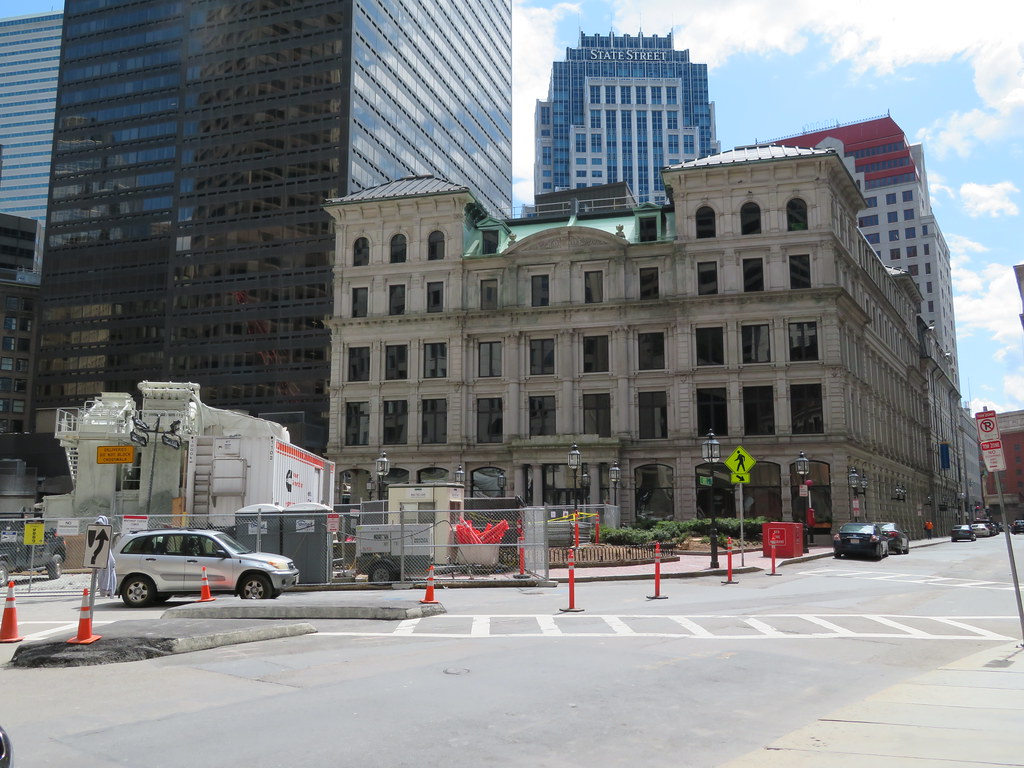Any chance they're doing some additional foundation work post San Fran tower shifting? Well highly unlikely any goof would sure sink MP on a reputation risk.
1. SF is built on top of the coastal Sierra Nevada alluvial plain, on sands and gravels resulting from weathering over tens of millions of years.
2. At wide-ranging depths, San Francisco's bedrock can be reached. In some parts of SF the bedrock is of a lesser quality (sedimentary layers) of sandstone and shale vs (igneous) granite reefs typical of the East Coast. In other parts of the city, hard bedrock is reached at just a few feet of depth. In the Transit Center district of the Transbay area, the depth is somewhere around 200' give or take.
3. Complicating the problem with building in San Francisco are their "soft soils" and geosoils being subject to liquefaction during seismic events. To give you an idea of just how serious this problem is, SF's sedimentary formations give rise to soils moving as much as 10 times as much as soils of typical cities east of the Rockies during seismic events. Not good.
4. MP was advised by Webcor & UC Berkeley consultants to go for friction piles down deep enough into compact gravels and sands to force x resistance times x number of piles. As is commonly known, the plan stopped short of reaching bedrock. City engineers approved the analysis and plan. Together, their geo-technical analysis and oversight woefully underestimated the ability of the sands and gravels to settle and push back against the tower loading.
Millennium can be seen somewhat as a victim companion alongside the buyers of the condominiums. It sounds good, anyway.
5. It should be considered no accident that the extremely heavy Transbay supertall has altered/moved/compressed the geosoils on that side of Millennium Tower--as that is indeed the side upon which the tower leans.
6. Either way, it's a very hard and painful lesson learned.
7. They will attempt to add density and pressure by installing micro-piles on the 'settling end' of the foundation--in hopes that the tower will correct its lean over x number of centuries, i mean years.
Manhattan is at a distinct advantage for its shallow granite and uncomplicated pile installations. Such places as Chicago & Boston, present a significantly greater challenge, and are in a riskier situation; as mud and sands reach to greater depths (leftovers from advancing & receding glaciers). But it also leaves builders with a clearer fork in the road: Chicago and Boston both have histories, and experiences with buildings of various heights settling over time.
*This is precisely why their 19th century foundations were subject to various and well-documented settling/sinking/cracking, etc for low-rise & tall mid-rise brownstones, hotels and office structures. **(A famous case is the 16 story Monadnock Building built in the 1890s, which after just a few decades had settled something like 2 feet!) Unfortunately, bedrock in Chicago and Boston is often found at challenging depths >150'. Mud simply doesn't cut it, so geosoil engineering plan submittals have buildings above a given height resting on bedrock, or they aren't allowed to get built.
In this context, San Francisco & Boston have some interesting things in common: Millennium Partners and Boston Properties both happen to build towers in these cities. To the layman, it's danger Will Robinson. However, the challenges for geotechnical science & engineering seem to call an alarm, and while building in either city presents its own unique challenges, and both share histories of mistakes being made, the similarities end there.
As they say, apples and oranges.









